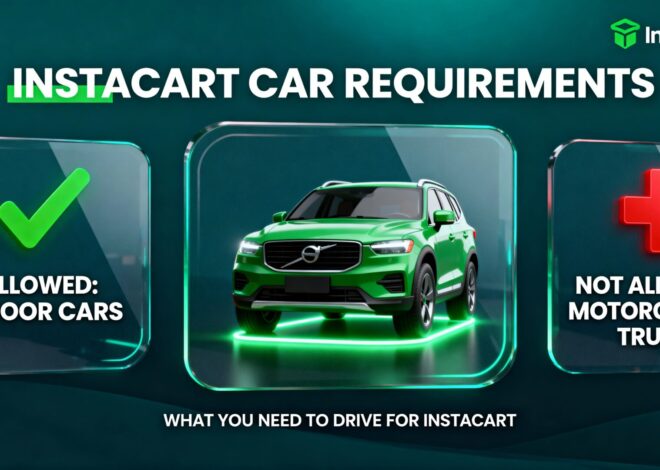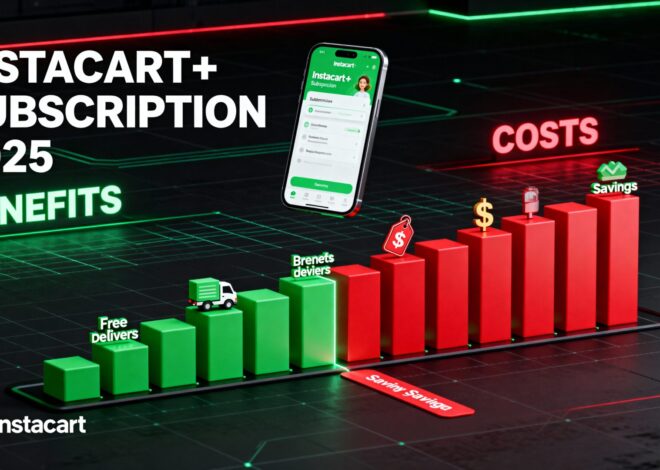
How Much Do Instacart Shoppers Make in 2025? A Comprehensive Earnings Breakdown
Instacart shoppers—gig workers who pick, pack, and deliver groceries—earn through a mix of base pay per order (or “batch”), customer tips, and occasional bonuses. As of September 2025, average hourly earnings range from $13 to $26, but this varies widely based on location, demand, batch size, and tips. Full-service shoppers (who shop and deliver) typically make more than in-store shoppers (who only prepare orders inside stores). Real-user reports from Reddit and X highlight volatility, with many relying heavily on tips due to low base rates ($4-10 per batch). Drawing from job sites, gig economy analyses, and recent discussions, here’s a full dive into what shoppers can expect, including net pay after expenses like gas and vehicle wear.
Instacart Shopper Pay Structure: How Earnings Work
Instacart doesn’t offer a fixed hourly wage for full-service shoppers; instead, pay is batch-based. In-store shoppers get a flat hourly rate (around $15-17 in most areas). Key components:
- Base Pay: $4-10 per batch, down from a previous $7 minimum in many zones. This covers shopping time, mileage, and item count. Batches often bundle 2-3 orders, reducing per-customer payout but increasing volume. Heavy or multi-store batches may add $2-5, but “heavy pay” bonuses have reportedly vanished in 2025.
- Tips: The bulk of earnings—average $6-10 per order, but can hit $12+ for excellent service. Shoppers see tip estimates upfront (though they’re adjustable post-delivery). X users advise tipping 20% or a $5 minimum, as base pay is “minimal” ($2-8 for large orders). Low-tip batches often go unclaimed, leading to delays.
- Bonuses and Incentives: Peak-hour boosts ($2-20 per batch) in busy times (e.g., weekends, evenings). “Diamond” status (high ratings, 100+ batches/month) unlocks priority access and free Instacart+ perks. However, X complaints note fewer bonuses in 2025, with algorithms favoring vets.
Payouts hit weekly via direct deposit, with instant cash-out options for a fee. Shoppers are independent contractors, so no benefits like health insurance—track expenses for tax deductions (IRS mileage: $0.67/mile).
Average Earnings: Hourly, Weekly, and Annual Figures
Data from 2025 sources shows wide ranges due to market saturation and economic factors. Nationally:
- Hourly Average: $13.88 (low end) to $26 (high end), including tips. ZipRecruiter pegs it at $18.33, with a range of $11.06-$43.27. Reddit users report $12-20 for part-timers, but elites hit $30+ by cherry-picking.
- Daily/Weekly: $100-200/day for 6-8 hours, equating to $400-1,000/week (20-40 hours). An 8-hour shift might net $111 gross. Full-timers working 7 days (6AM-10PM) aim for $30/hour minimum to avoid feeling “used.”
- Annual: $40,824 for in-store shoppers; $69,342 for delivery drivers (17% above U.S. average). Top 10% in urban areas clear $50,000+ part-time.
| Earnings Level | Hourly Gross | Hourly Net (After 20-30% Expenses) | Weekly (25 Hours) | Factors |
|---|---|---|---|---|
| Low (Rookies/Rural) | $10-14 | $8-11 | $250-350 | Low demand, small batches, few tips |
| Average | $16-22 | $13-18 | $400-550 | Urban areas, decent ratings, peak hours |
| High (Elites/Urban Peaks) | $25-35+ | $20-28 | $600-875+ | High ratings, multi-batching, bonuses |
Estimates from aggregated 2025 data. Net accounts for gas ($0.20-0.30/mile) and wear—no reimbursements.
X anecdotes reveal drops: Batches paying $5-7 for 1.5 hours of work, with combined orders squeezing efficiency. One shopper noted a “dramatic drop in payouts” post-2023 changes.
Factors Influencing Earnings in 2025
Pay isn’t uniform—here’s what impacts it:
- Location: Urban hubs like NYC or LA offer $20-35/hour during peaks; rural areas dip to $10-15. High-demand zones have more batches but more competition.
- Time and Demand: Weekends/evenings boost with incentives; off-hours mean “low demand” waits. Aim for 3-4 batches/hour in busy times.
- Ratings and Status: 4.8+ stars unlock better batches; low ratings lead to deactivation risks. X posts mention firings post-Ontario’s $17.20/hour law, hinting at cost-cutting.
- Batch Selection: Decline low-payers (<$1/mile); multi-app with DoorDash or Shipt to fill gaps.
- Expenses and Taxes: Deduct 20-30% for costs; use apps like Stride for tracking. No overtime or minimum wage guarantees.
Reddit threads echo burnout: “I try to aim for $200 a day… most of the time.” X users complain of “scam” low pays, pushing multi-apping.
How to Maximize Earnings as an Instacart Shopper
- Optimize Schedule: Target peaks (4-8 p.m., weekends); avoid rural droughts.
- Build Ratings: Communicate via app, add notes, photo proofs—aim for 100% on-time.
- Batch Smart: Accept multis for $15+ boosts; decline <$1/mile.
- Leverage Perks: Rewards Card for 5-10% gas back; EV rebates if applicable.
- Multi-App: Combine with Spark or DoorDash for $25+/hour.
- Track Everything: Use mileage logs; join forums like r/InstacartShoppers for hacks.
Veterans report $1,000/week with discipline, but rookies start lower.
Is It Worth It? Final Thoughts
In 2025, Instacart offers flexible side-hustle cash ($400-800/month part-time), but full-time viability hinges on tips and location—many feel “squeezed” by $4 base pays and batch bundling. If you’re efficient and in a hot market, $20+ net/hour is achievable; otherwise, consider alternatives like Shipt ($16-25/hour) or Amazon Flex. Always factor in physical toll and inconsistency—X stories highlight frustrations like deactivations and low tips. For the latest, check Instacart’s shopper app or gig forums.
What’s your experience? Share in the comments!



